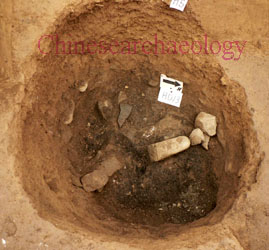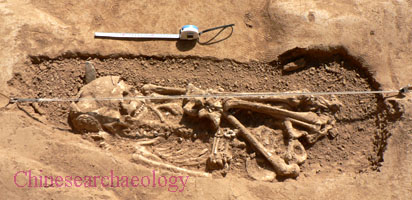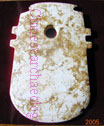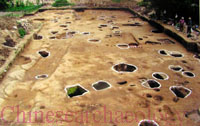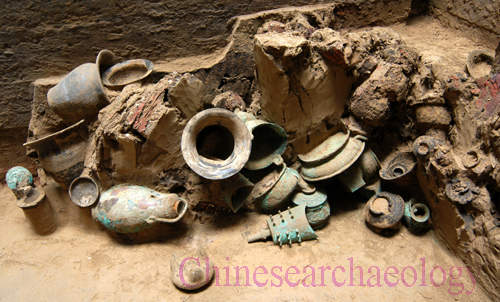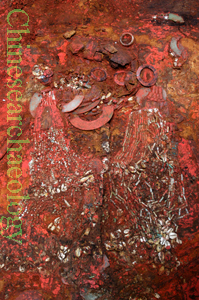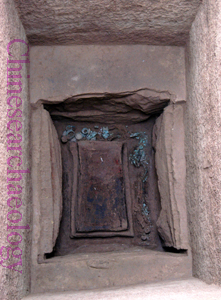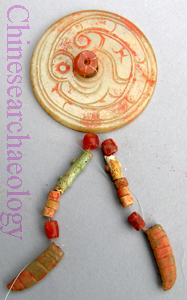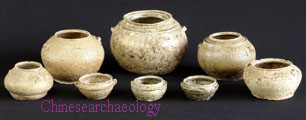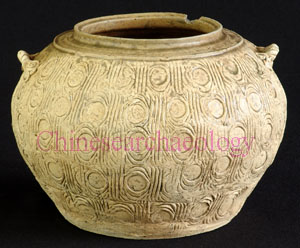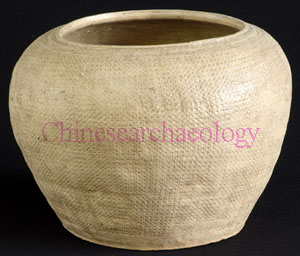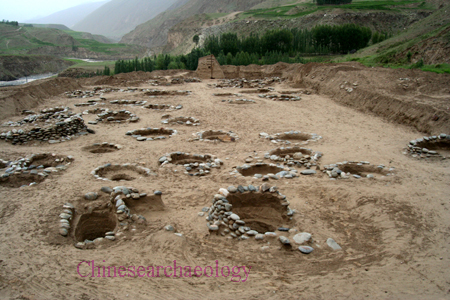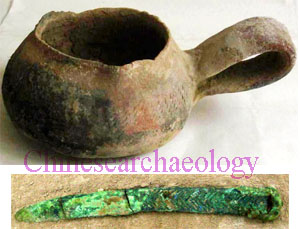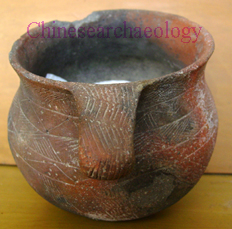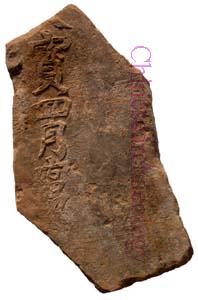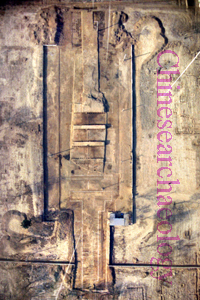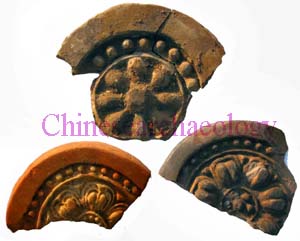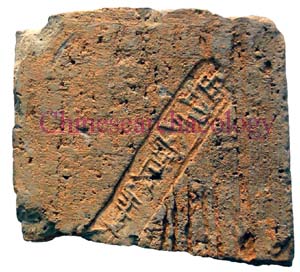Archaeology Forum 2005 in Beijing
|
The excavation at the Neolithic shell mound Gaomiao in Hongjiang City in Central China's Hunan Province unearthed a large quantity of finely made white ceramic vessels with complex designs of animal masks, birds and architectures. These white ceramic vessels dated to about 7800 BP, as one of the earliest types of elite goods in prehistoric China, had diffused to many areas in the middle and lower Yangze River valley. A small plaza probably for the performance of ritual ceremonies was also found by the excavation.
Ancient tombs dated back to the Western Zhou Dynasty (1100 BC-771 BC) in Jiangxian County in North China's Shanxi Province give archaeologists a big surprise with their elegant burial offerings including bronze vessels and jade ornaments. A huangwei (silk coffin-cover ) found by the skillful hands of archaeologists proves, for the first time, the reliability of the record in some ancient texts on the funeral ritual system of the Western Zhou.
The 2005 excavation conducted by archaeologists from the Nanjing Museum unveiled the mysterious mask of the mound grave in East China's Jiangsu Province. Based on more than 3800 artifacts found in 233 burials under 40 mounds, archaeologists now can say with self-confidence that these mounds had been built from the Western Zhou to the Spring and Autumn Period by local people in the Lower Yangze River valley.
Excavation conducted by the IACASS at the Liushui cemetery in Khotan, Xinjiang Uygur Autonomous Region unearthed 65 burials dated to about 4400 BP. Some metal objects are similar with those of the Scythian people. According to a preliminary research on the skeletons, the Liushui people might be the hybrid of Mongolian and European races .
Excavation launched by the IACASS in Xi’an unearthed the most important gate of the most important palace – the Daming Palace of the glory Tang Dynasty. The carefully planned fieldwork, together with fine antiquities, found all the five entrances of the gate which were recorded in ancient texts.
As Professor Bai Yunxiang, deputy director of the Institute of Archaeology said, Chinese archaeologists have clearer academic goals in their excavation and research, and archaeological methods have been improved greatly. More modern technologies have been applied in archaeological research, and the protection of cultural relics was highlighted during excavation. |


